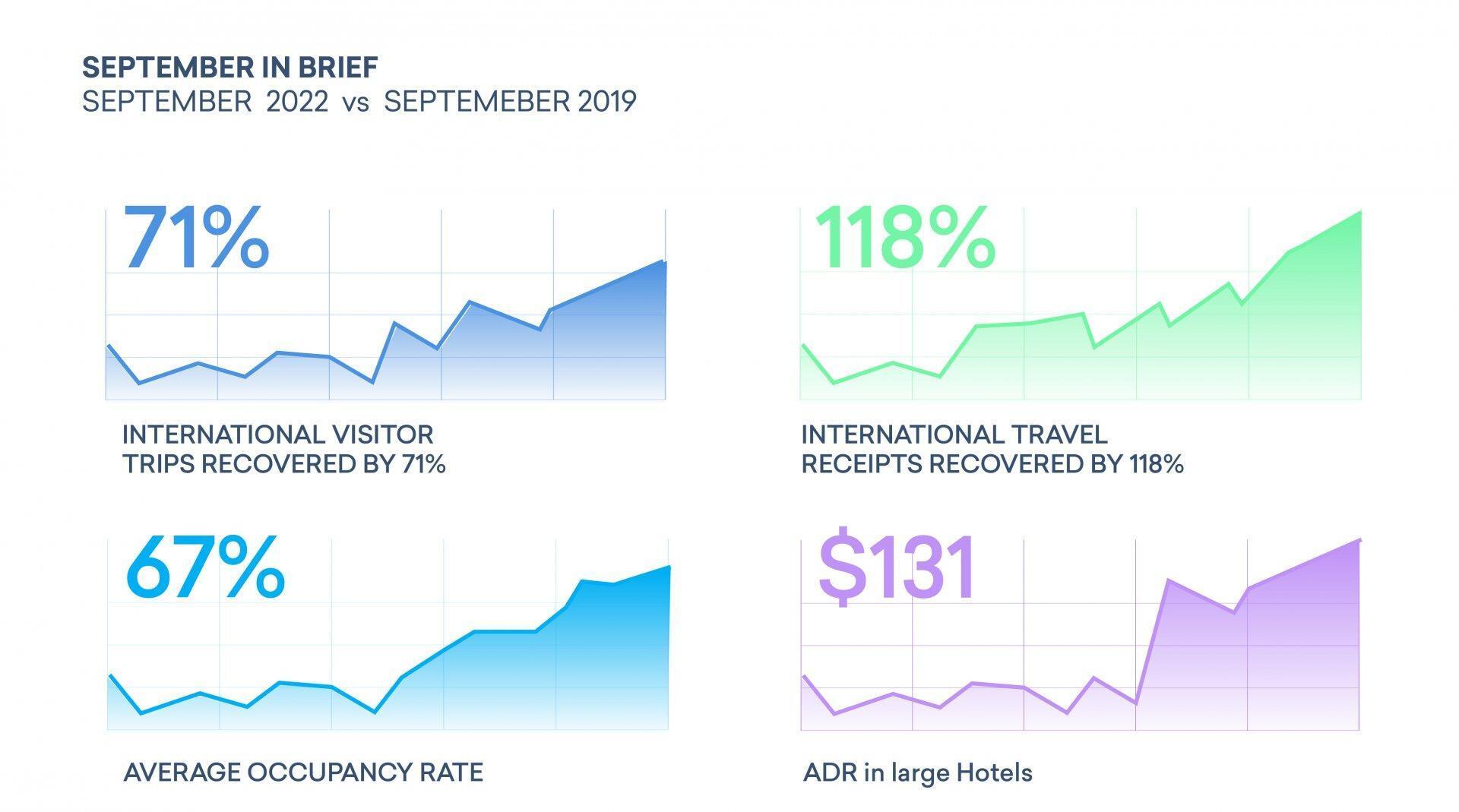
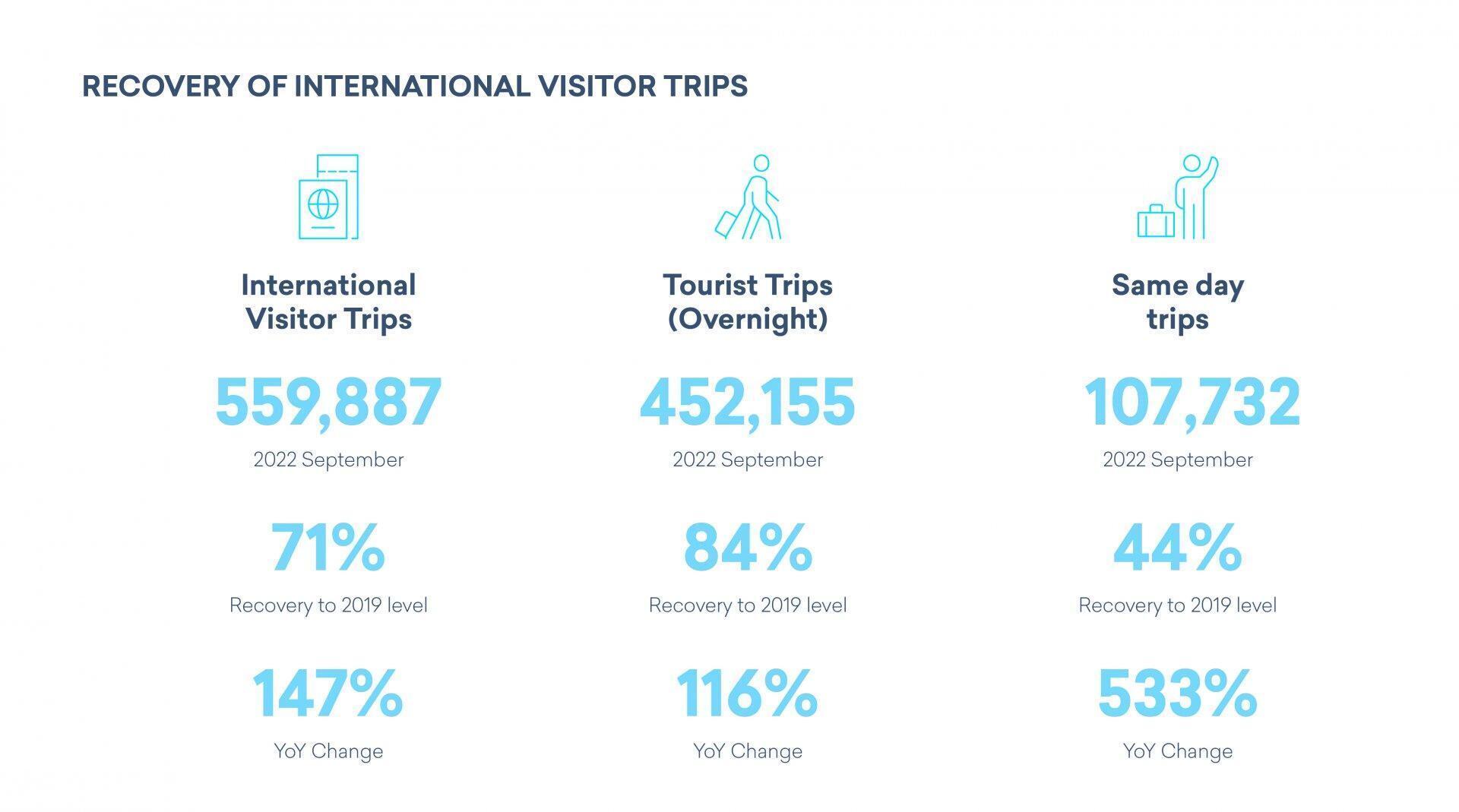
Kazbegi (Russian border) was the most frequently crossed border with a 24% share of all trips to Georgia in September 2022. The distribution of international trips by other borders is the following: Sarpi (Turkish border) -20%, Tbilisi International Airport – 19%; Sadakhlo (Armenian border) – 14%; Batumi Airport –7%, Kutaisi Airport – 6%. The sum of international visitor trips from these six borders accounted for 89% of all trips.
Male visitors performed more than half of the visitor trips, with 61% share in total visitors. A significant number of visitor trips (47%) was attributed to visitors within the 31-50 age category.
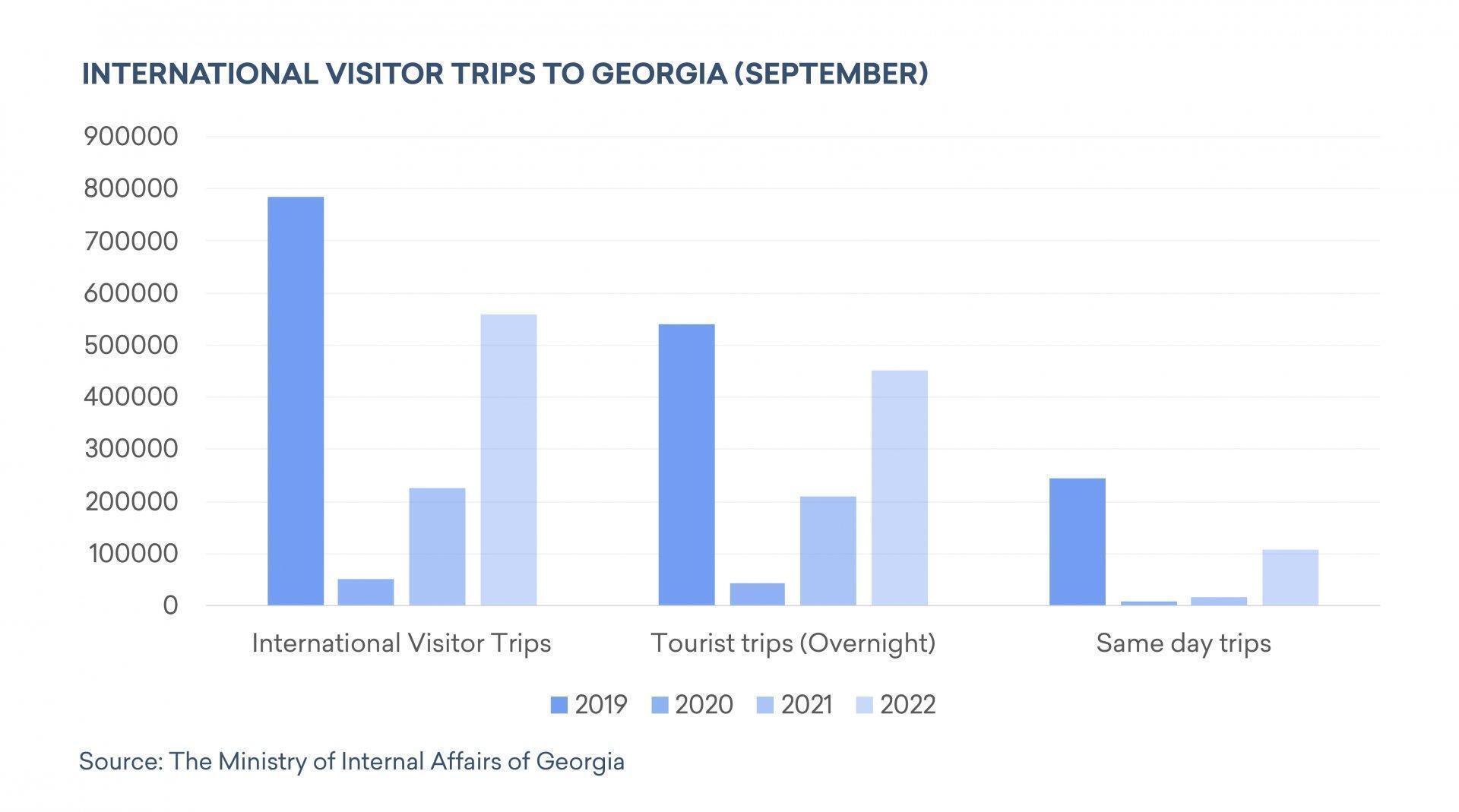
In September 2022, the share of neighboring countries in international visitor trips was 61%. In 2019 this number stood at 66%. Armenia almost reached the 2019 level in terms of share in total visitors, Russia and Turkey outpaced their September 2019 levels and Azerbaijan’s share is yet to recover.
The share of the EU+UK amounted to 7%. Germany (21%), Poland (16%), UK (7%), Latvia (7%), and Greece (6%) registered the highest number of international visitor trips from the region.
The Middle East accounted for 3% of all visitor trips, up from 2% in September 2019. The following countries primarily represented the Middle East: Saudi Arabia (55%), Jordan (14%), Kuwait (11%), United Arab Emirates (5%), and Egypt (4%).
The recovery to the 2019 level in the neighboring countries varied in September 2022, with Azerbaijan registering the lowest rate among the neighbors (10%). The reason behind this low recovery remains the partially closed border. The international trips from Russia surpassed the 2019 level with 11% growth. The strong inflow of visitors from this country is attributed to the open land borders and migration.
Turkey and Armenia also posted strong recovery with 85% and 65%, respectively.
Israel showed the highest recovery among the countries after Russia – 90%. Although the share of Ukraine in visitors remained stable mainly on the back of the migration, the recovery of visitors from Ukraine continued downward trend due to the obvious reasons.
As a region, the Middle East posted the high growth of 31% in September relative to 2019. The recovery of the US increased and amounted to 80% in September 2022.
The recovery of the EU remained stable with 55% recovery in September 2022 .
The following countries fully recovered and outperformed the number of visits registered in September 2019: Uzbekistan 226%, Belarus 95%, Moldova 43%, Tajikistan 31%, Kirgizstan 41%, and Kazakhstan 21%.
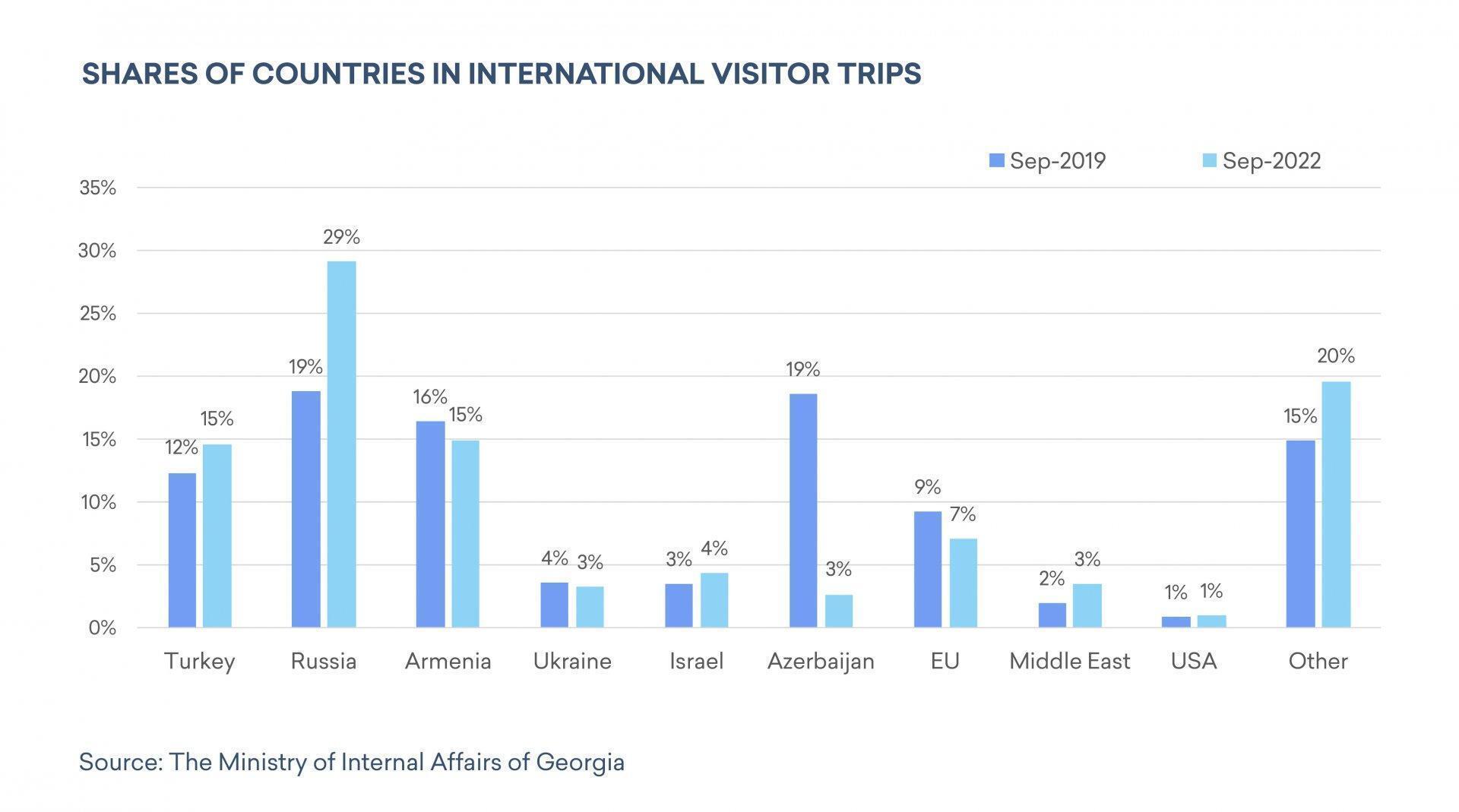
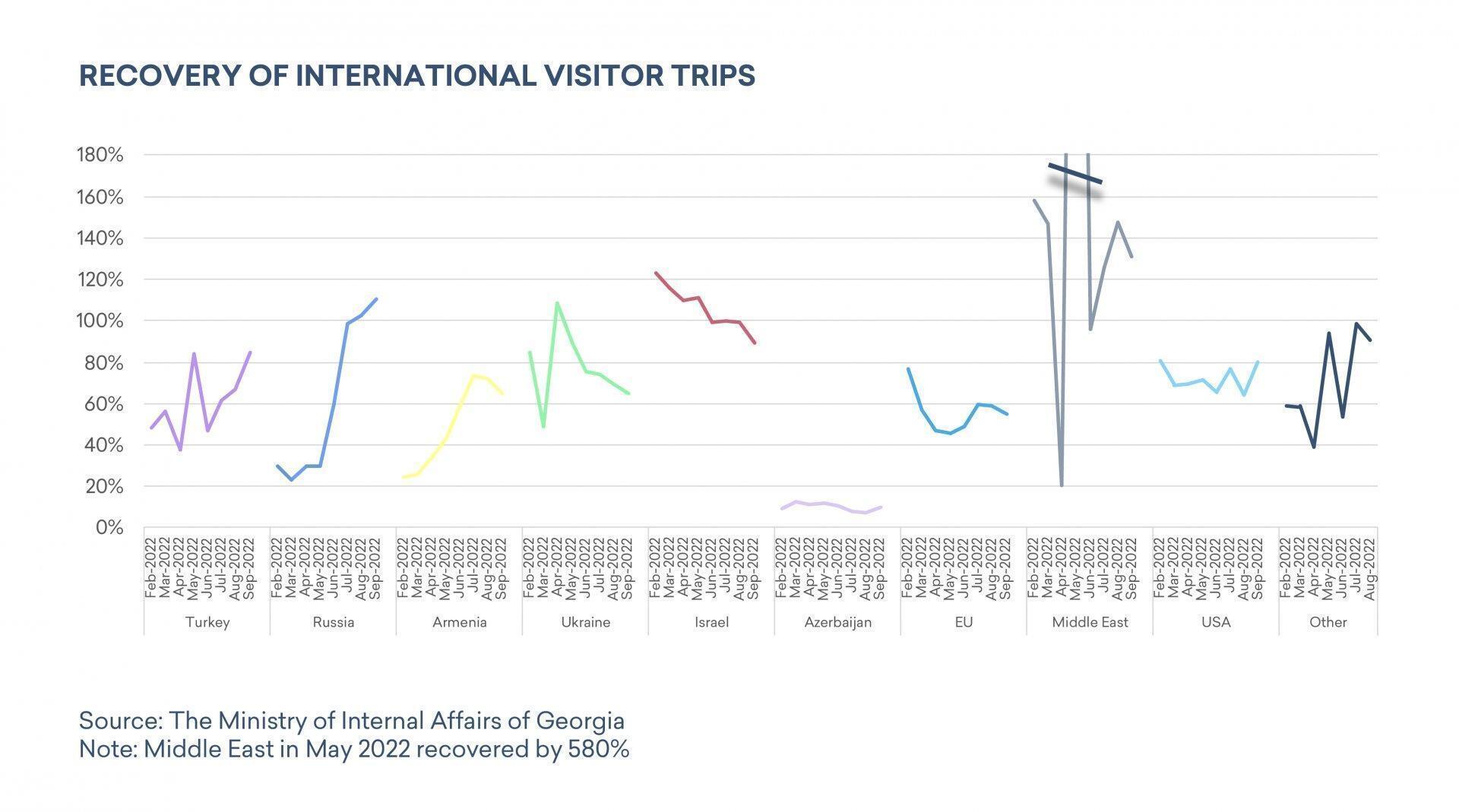
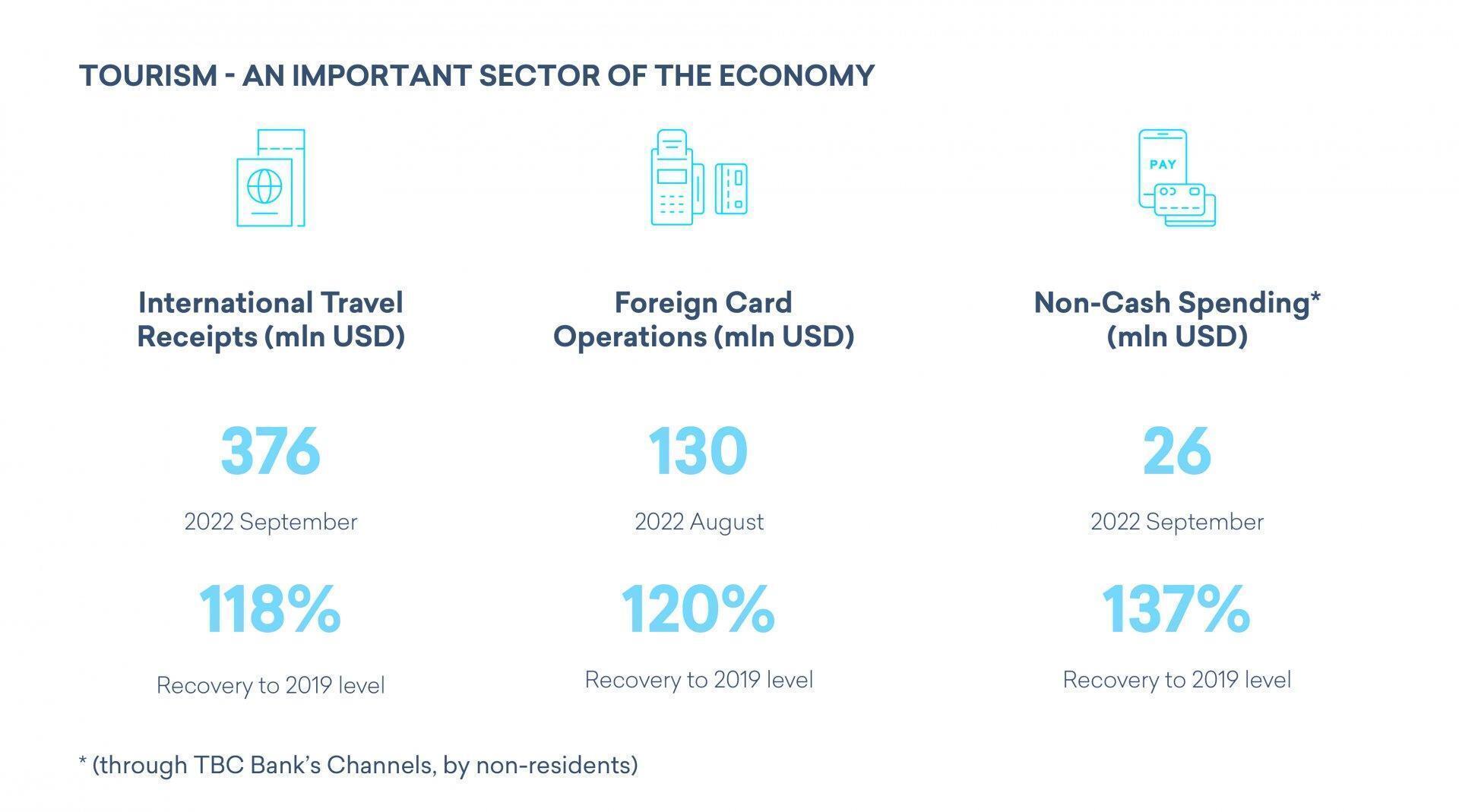
In September 2022, the growth of international travel receipts overtook the 2019 level by 18%.
The share of neighboring countries in international travel receipts reached the pre-pandemic level of 42% in September 2022. The significant increase in the share of Russia is the main reason for such a marginal difference as Turkey, Armenia, and Azerbaijan are still behind their pre-pandemic level.The share of Ukraine in international travel receipts surpassed the pre-pandemic level.
The share of revenues received from tourists of Israel almost reached the 2019 level.
The EU’s share in international travel receipts is significantly behind the 2019 level, amounting to 12% relative to 2019.
In September 2022, the share of Saudi Arabia surpassed its pre-pandemic level and amounted to 3%.
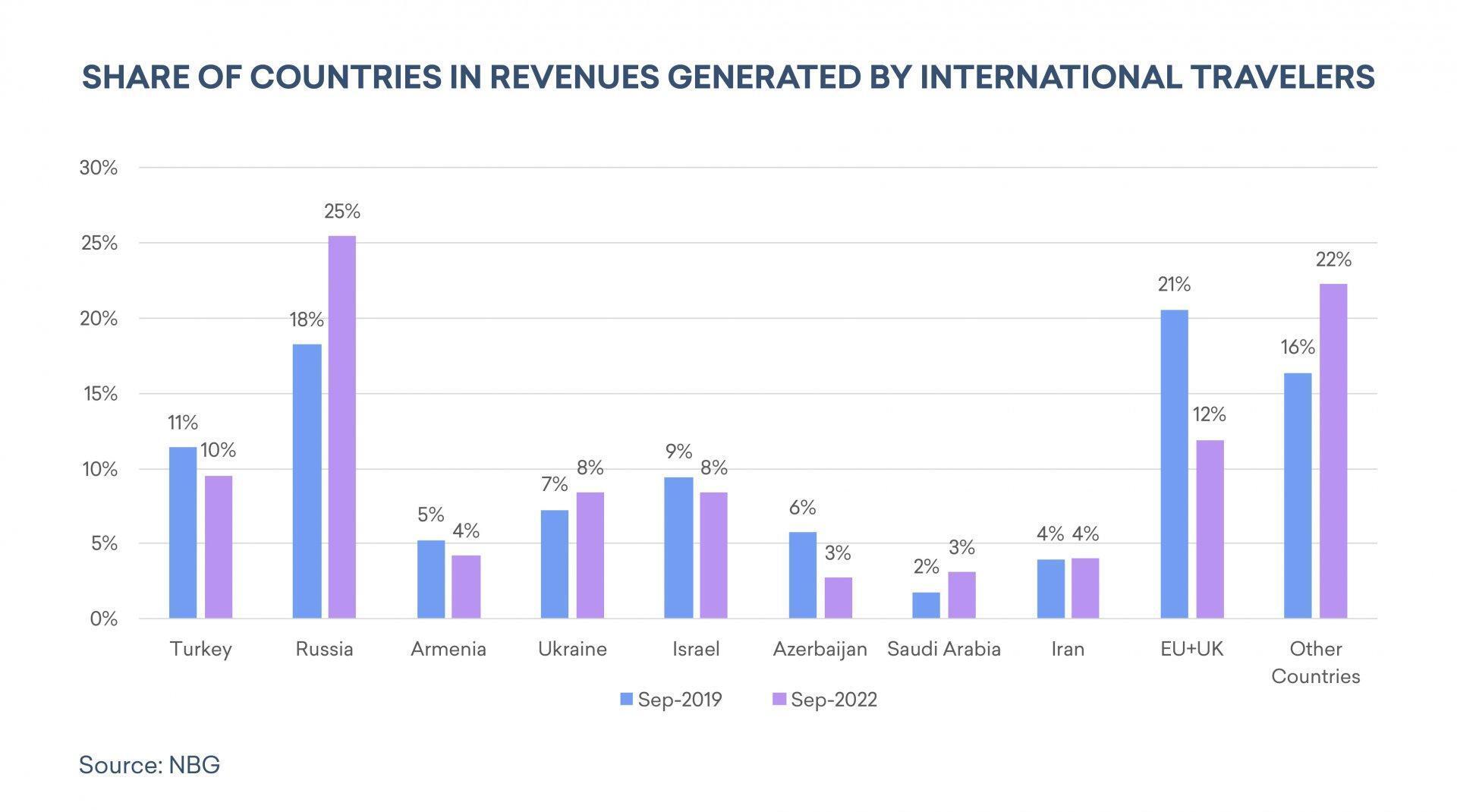
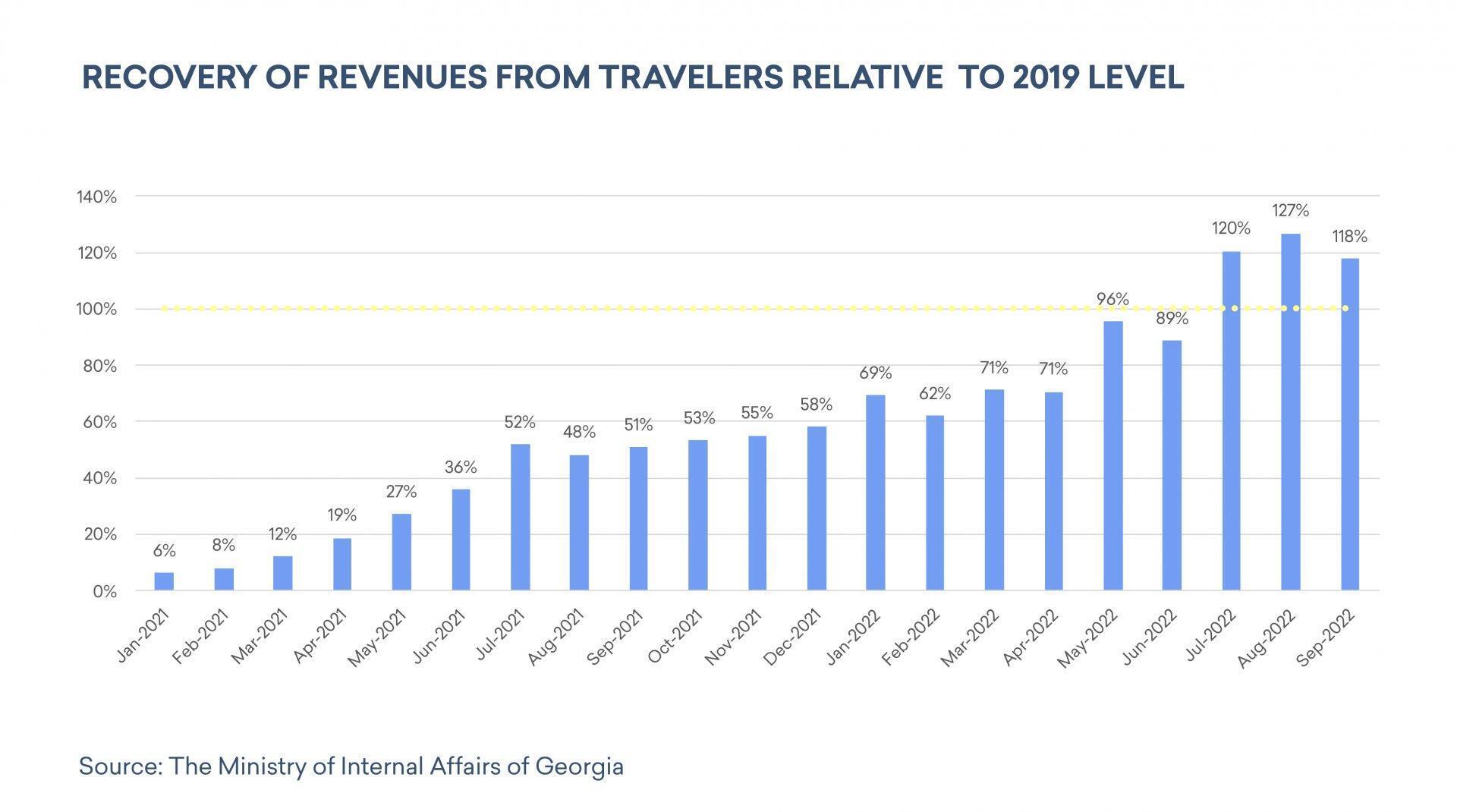
In September 2022, Russia, EU+UK, Turkey, Ukraine, and Israel were the main sources of tourism revenues. Visitor trips translated differently in travel revenues for different countries: Armenia, holding 15% of visitor trips, contributed a moderate 4% to travel receipts. Israel, with 4% share in international visitors held 8% share in revenues.
Growth of non-cash expenditure of non-residents through all channels in Georgia decreased in August 2022. Non-cash expenditure through TBC Bank’s channels in September 2022 slowed down and posted 18% growth compared to 2019.
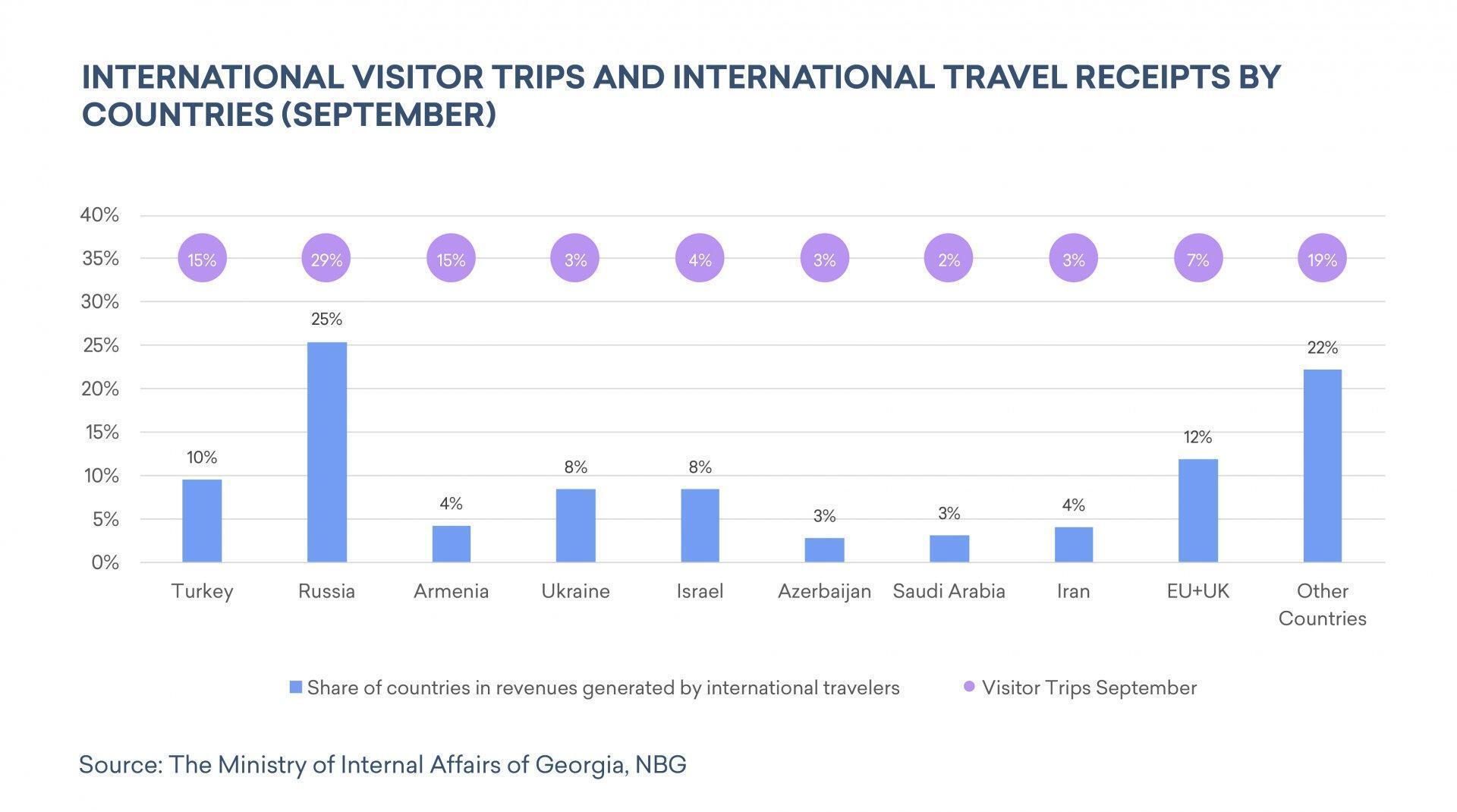
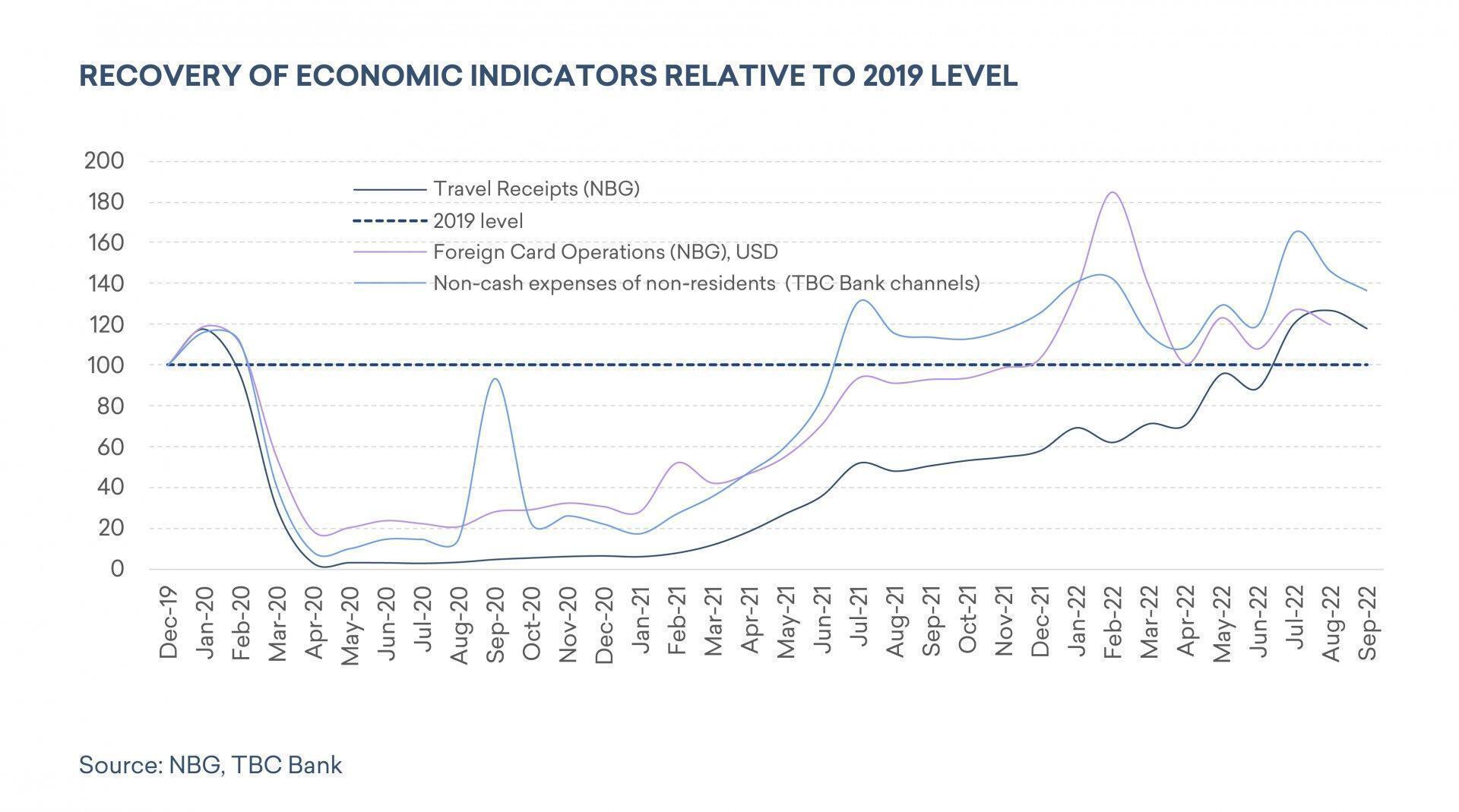
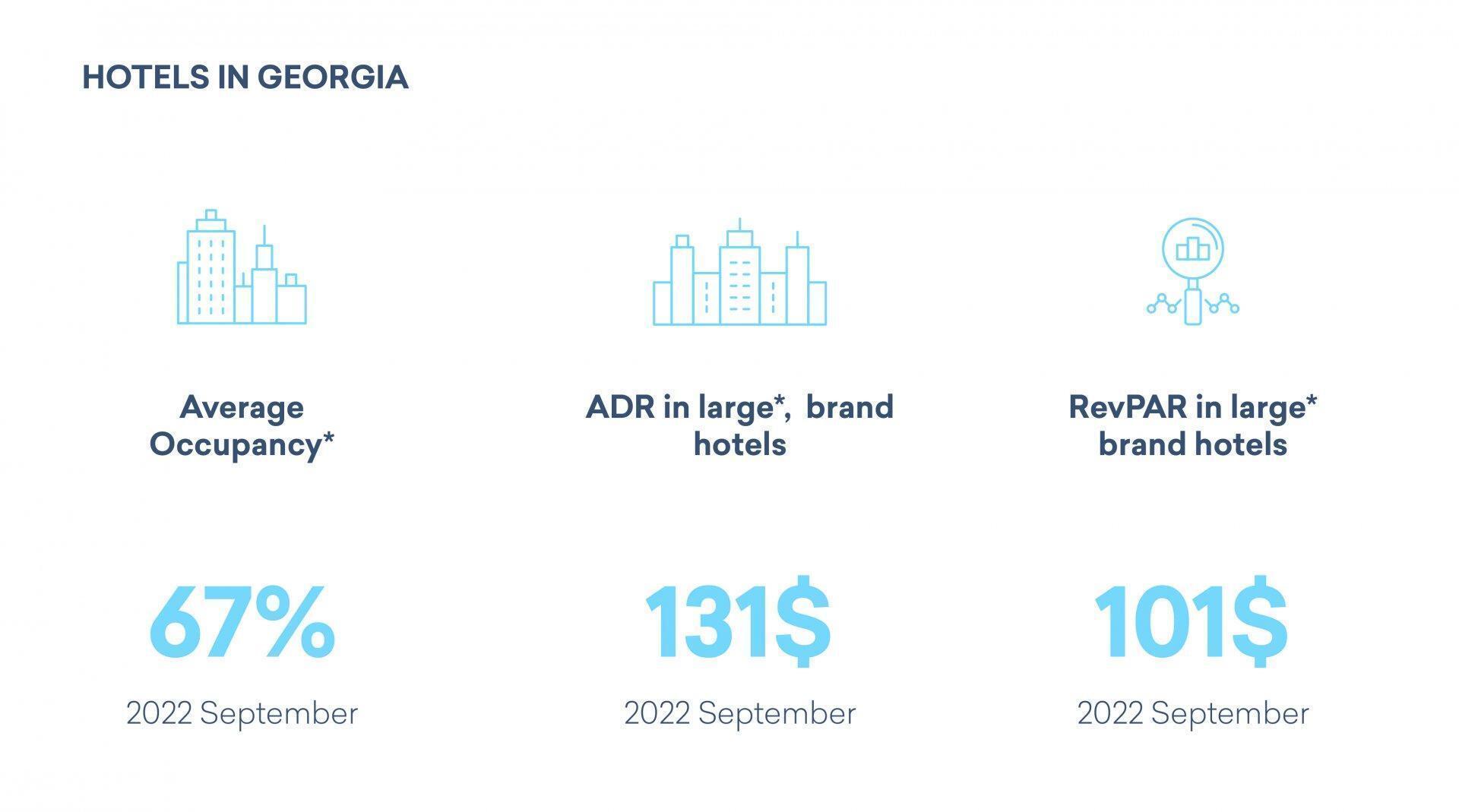
In September 2022, the average occupancy increased relative to the same period in 2019, by 6 percentage points. The average occupancy of medium and small hotels outpaced the 2019 level by 15 pp.
Tbilisi’s average occupancy rate remained stable and amounted to 76% in September 2022. The hotel occupancy in the seaside region significantly outpaced 2019 level – 63% in Adjara, an 18 pp increase compared to September 2019.
The occupancy level in the Kakheti region also enjoyed positive results outperforming the 2019 level by 11 pp.
In September, the average daily rate in large hotels recovered by 94% relative to the 2019 level. High occupancy, coupled with high ADR indicates strong demand.
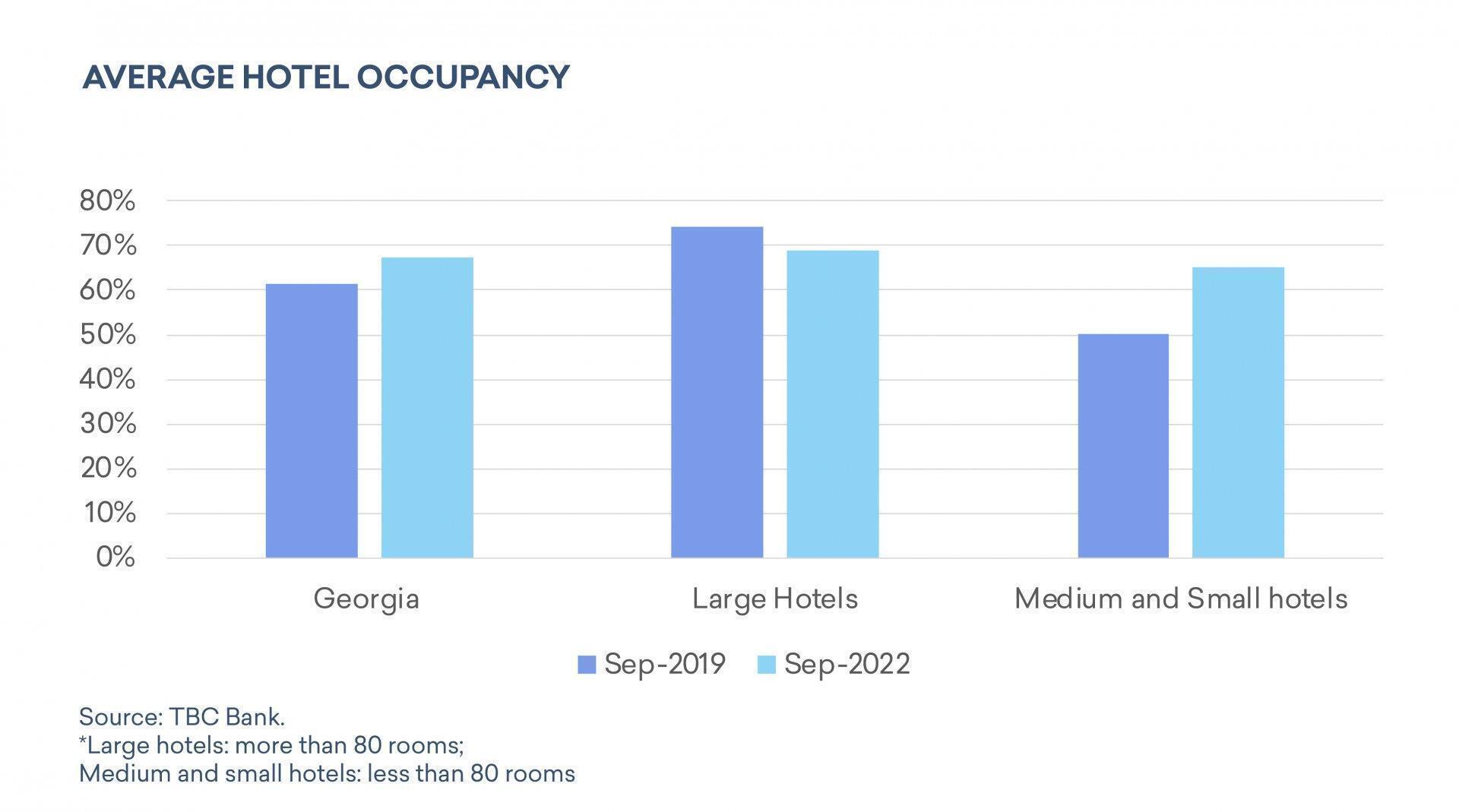




























Discussion about this post